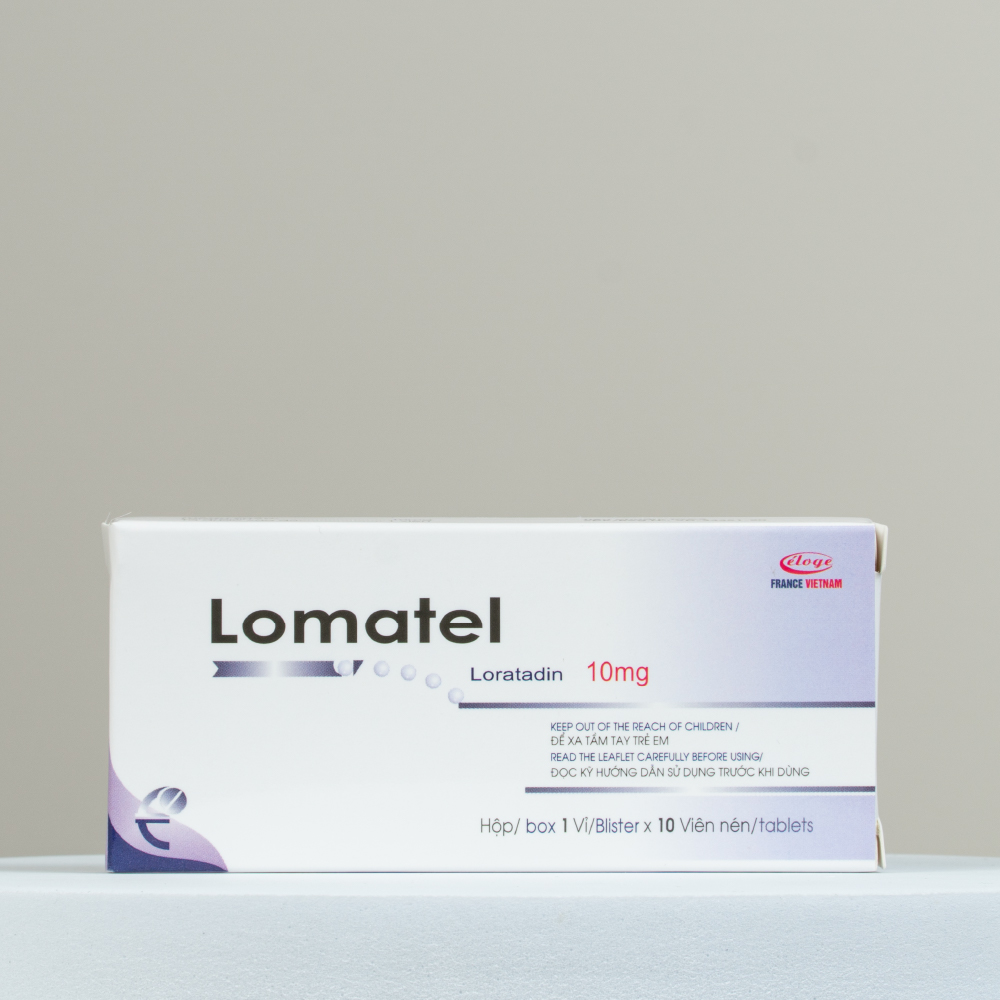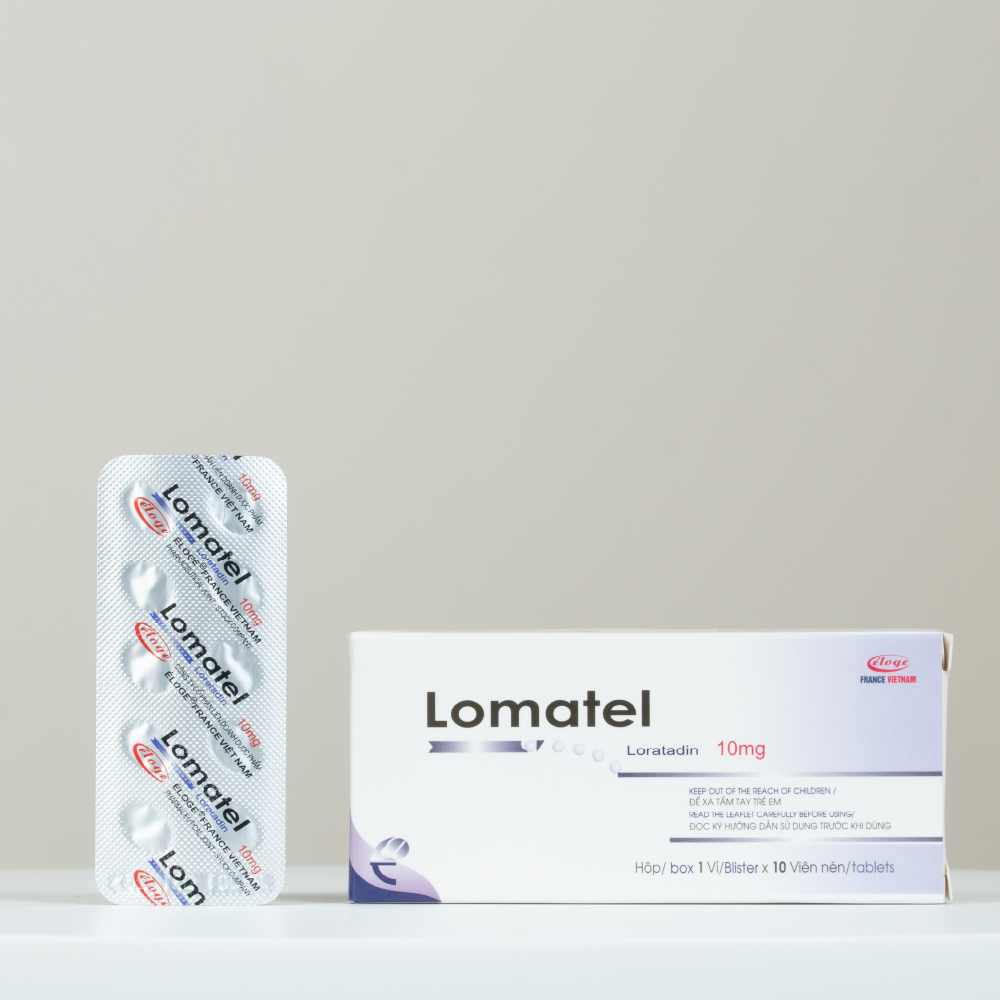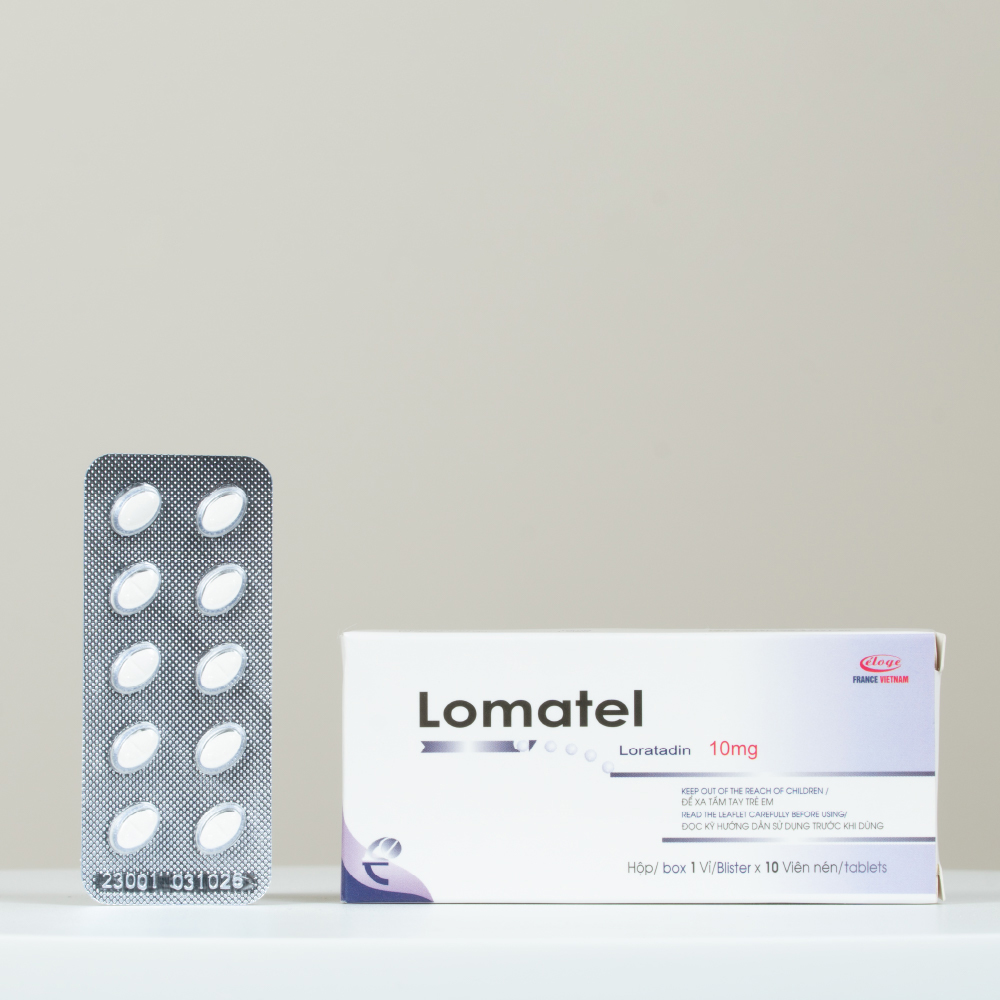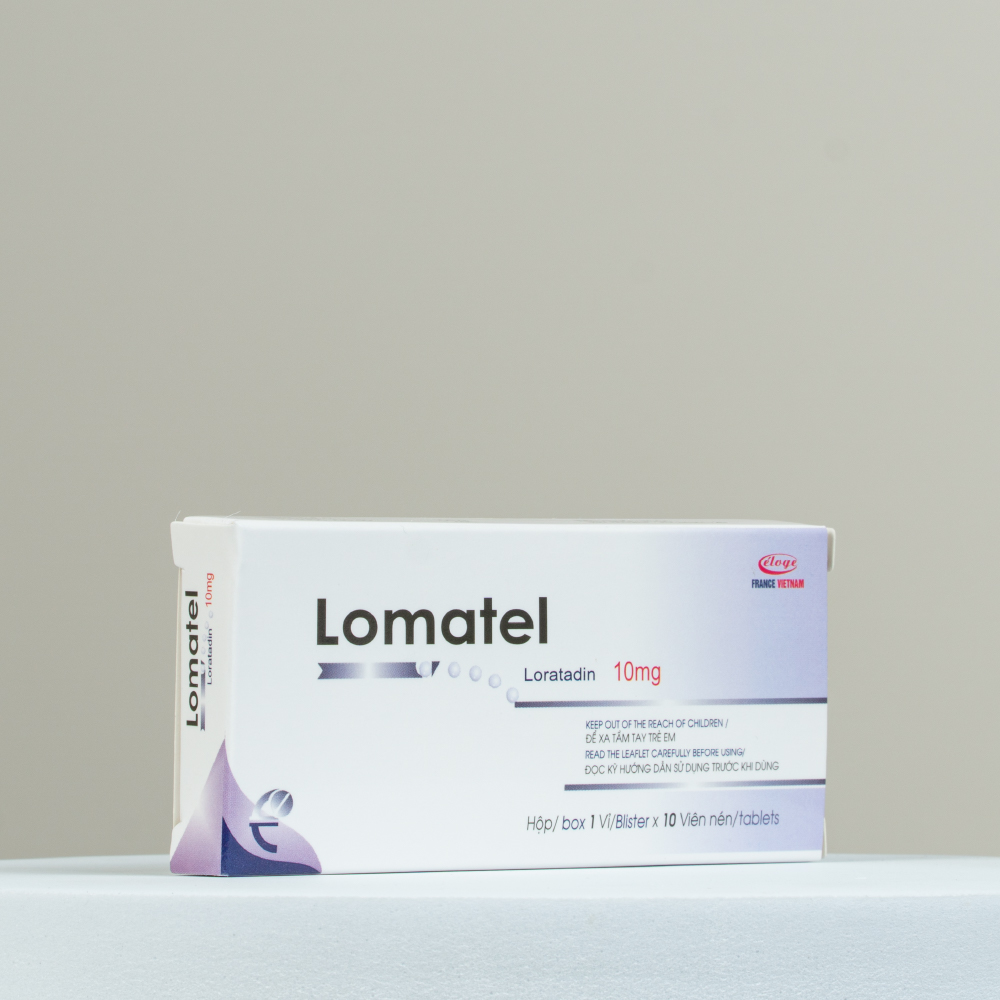Description
Composition:
Loratadine 10 mg
Wheat starch, Avicel, PVP, magnesium stearate q.s for 1 tablet.
INDICATIONS:
Lomatel is indicated to reduce symptoms in the following cases: Allergic rhinitis, with the symptoms: Sneezing, runny nose, rheum, itching. Allergic conjunctivitis Itchy hives related to histamine.
CONTRAINDICATIONS:
Hypersensitivity to one of the ingredients of this drug
ADVERSE EFFECTS (ADR) AND MANAGEMENT:
With a daily dose of 10 mg, Lomatel does not cause clinically significant drowsiness. The common adverse effects include fatigue, headache, drowsiness, dry mouth, gastrointestinal disturbances such as nausea, stomach inflammation and allergic symptoms such as hives. It’s very rare for alopecia, anaphylactic shock, liver function abnormalities, ventricular arrhythmias. Management of ADR: Use Loratadine with the smallest effective dose.
Inform your doctor unwanted effects related to drug use.
CAUTION:
Patients with liver failure.
The level of safety and efficacy of Lomatel in children under 2 years is not established.
INTERACTIONS:
Since Loratdine is metabolized by the liver, so drugs that inhibit liver enzyme or are metabolized by the liver (eg: cimetidine, ketoconazole, erythromycin) will alter plasma concentrations of loratadine, but this disorder is not clinically significant (including ECG).
DOSAGE:
Adults and children over 12 years: 1 tablet per day.
Children 2-12 years: weight > 30 kg: 1 tablet / day; weight < 30 kg: 1/2 / day
People with liver failure or severe renal impairment (creatinine clearance <30 ml / minute): initial dose is 1 tablet every 2 days.
USE DURING PREGNANCY AND LACTATION:
There have not been adequate studies and testing on the use of Loratadine during pregnancy. Therefore only use Loratadine during pregnancy when necessary and with low doses for a short period of time.
Since Loratadine is excreted in breast milk and increase risk of antihistamines on newborns and premature babies, it is advisable to either discontinue nursing or using the drug while breastfeeding.
IMPACT ON ABILITY TO DRIVE OR USE MACHINES.
The drug does not affect the ability to drive and use machines.
OVERDOSAGE AND MANAGEMENT:
In adults: When overdosed (40 mg to 180mg taken at once) the symptoms can include: drowsiness, tachycardia, headache.
In children: when over 10 mg is taken, there can be symptoms of extrapyramidal manifestations and palpitations.
Treatment: Treatment for normal Loratadine overdose is usually symptomatic treatment and support, started immediately and maintained as long as necessary. In case of severe Loratadine overdose, induce emesis with syrup ipeca to flush the stomach immediately. Use of activated charcoal after emesis may help prevent absorption of Loratadine. If emesis does not help or is contraindicated, an option is to flush the stomach with gastric 0.9% NaCl solution and lay endotracheal tube to prevent inhalation of gastric contents. Loratadine is not eliminated by hemodialysis.
PHARMACOLOGY:
Loratadine is a 3 rounds antihistamine, with long-lasting impact with selective countervailing activity on peripheral H1 receptors, and does not have a soothing effect on the central nervous system. Loratadine belongs to the H1 receptor countervailing 2nd generation group (no sedation effects).
Loratadine can ease the symptoms of rhinitis and allergic conjunctivitis by releasing histamine. Loratadine also have anti-itching and anti-hives effects related to antihistamines.
To treat nasal allergies and urticaria, loratadine work faster than astemizole and is as effective as cetirizine, chlopheniramin, terfenadine. However, it has few adverse effects on the central nervous system than other 2nd generation antihistamines. So, use loratadine once daily, with its fast-released effect, especially without sedation, is the best choice for the treatment of nasal allergy or allergic urticaria.
PHARMACOKINETICS:
Loratadine is rapidly absorbed after oral administration. Peak plasma concentrations of loratadine and active metabolite, respectively achieved after 1.5 and 3.7 hours.
97% Loratdine combine with plasma protein. The half-life of loratadine and descarboxyloratadine are respectively 17 and 19 hours. The half-life of drugs vary widely between individuals, is not affected by blood urea, and increase in the elderly and people with cirrhosis.
Loratadine is metabolized many times initially through the liver cytochrome P450 microsomal enzyme system; primarily metabolized into descarboethoxyloratadin (desloratadine), an active metabolite.
Approximately 80% of the total dose of Loratadine is equally excreted in urine and excretion, as metabolites within 10 days
SHELF LIFE: 36 months from date of manufacture.
Do not use beyond the time stated on the packaging.
STORAGE: Store in dry place, at temperature not over 30oC, protected from light.
Specification: Manufacture’s standard.










